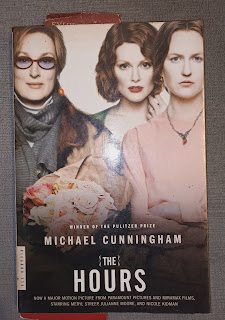
"When you are covering a span that is longer than your moulding, splice two pieces together with a scarf joint. Lay the moulding with its back flat against the bottom of the miter box or the bed of the power miter saw. On one piece, cut through the face at 45 angle so the edge of the cut is visible from the front. On the second piece, cut through the face at 45 angle so the edge of the cut is hidden from the front. The joint should meet over a wall stud or some other point where it can be nailed."
When translating literary materials, I get high on the mere act of choosing the most apt idiomatic metaphors. Medical translation on the other hand gives me a little headache although there are so many doctor friends out there who help me with medical jargon. But where can I find a carpenter to help me "tagalize" technical handouts that will go with the packaging of tools for end user's consumption? I turn to somebody who might know something about carpentry, and he tells me to "Call Boysen Inc." Some help.
But I'm not complaining. This recent job of translating several handouts about tiling, painting, moulding, has given me constant exercise. I just read that we need to flex our mind muscles to prevent the risk of Alzeimer's. I've no patience with crossword puzzles but translating technical materials may as well substitute in place of it. How I exhaust every resource in order to find an equivalent, long or short, for a technical expression! What I desperately need at the moment is a book that illustrates (preferably colored and detailed) the quote above. If I can picture it, I can translate it. And of course, a carpenter-consultant can help.
My brother, an electrical engineer, helps by giving me a point-by-point account of what a carpenter does when installing tiles, complete with descriptions of what a grout, an adhesive, or a leveler is. I call him several times, even when he's already asleep (because the deadline for online translation is always rushed)and he rambles with a huge yawn about what "crown molding" means. "Kornisa lang yan," he says impatiently, "yung ikinakapit sa kisame para di makita ang dugtong." "What about chair rail in the middle of a wall?" I ask. And he answers, "Pansangga sa dale (protection against a hit)"; wag mo na tagalugin. Sabihin mo pansangga sa dale." However apt, I can't use "dale" because it's a dialect and not "Manila Tagalog" as publishers would put it.
When it comes to the different kinds of saws: hacksaw, miter saw, hand saw, power saw, etc. the dictionary babbles something about blades, but this creates a new problem for me; now, I have to translate "blade" (talab na 60 is teeth: 60). Though this isn't much fun, I don't sleep until I am satisfied with my Tagalog translation, even if it is always an approximate.
But English has too many words for too many things. "Wood putty" "Plinth" "Wood Block" "filler stick" offer little challenge but what about "color washing?" "stucco?" "stippling?" And finally, the clincher, "bead of caulk" "scarf joint" "wood composite molding?" The dictionary gives me meanings but I merely stare at the words. Of course the Internet helps but I need to stay away from the computer at regular periods to rest my eyes. Looking for exact equivalents of technical tools and processes, I have also become best pal with my online thesaurus, which gives me an option of what reference tool to use.
The last time I visted National Book Store, I found myself browsing over "How Tos" of hands-on house maintenance from the shelf category "Practical Arts and Crafts". Since the prices of these books range from P500 to P3000, I couldn't afford them and so, I spent an hour and a half flipping through the pages of at least three illustrated manuals until the sales lady in charge got exasperated with my private reading. (Impatient, I tore the plastic wrapping of those books!) I simply got too engrossed with every carpentry tool and gadget. I tried to memorize the face of each precious word, but I simply don't have the photographic memory to master their parts and functions as well. However, I was glad that I met new friends, some "practical arts" books.
Just in case there will be more job orders like this,I feel that I need to do some trim painting myself in order to fully grasp the idea and be able to tell exactly what it is in Tagalog. Consequently, I should invest in some carpentry work in my own home and plan personal projects which will teach me how to build, decorate, accessorize and maintain a house.
The last thing I want is to call Boysen Inc., but who knows? Maybe, I only need an open mind. I will just hope that in my next consultation, I can find somebody like my brother, somebody who will not return to me with that snobbish advice.



Nice stumbling into your blog, Ate Jophs! So this is what you've been up to! What a challenge. See you in a couple of days. :-)
ReplyDelete